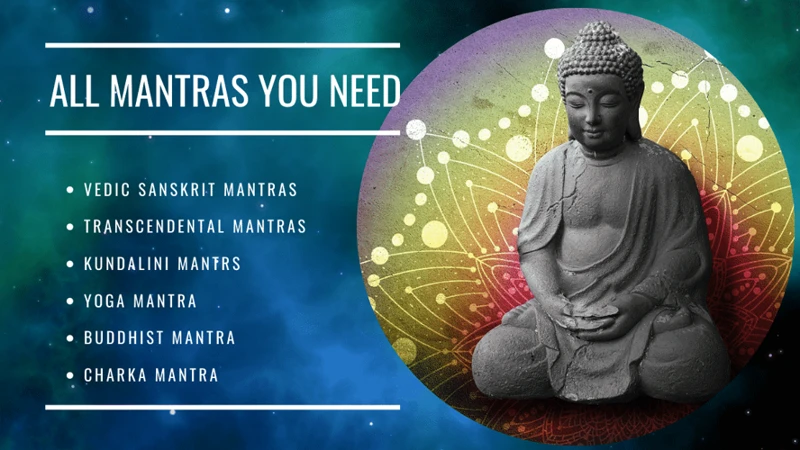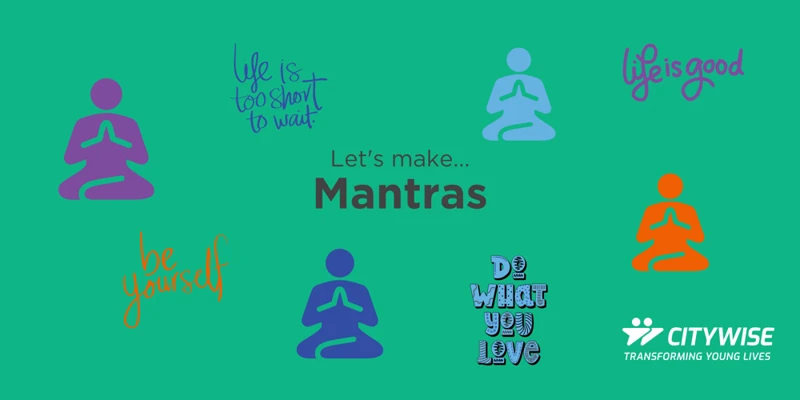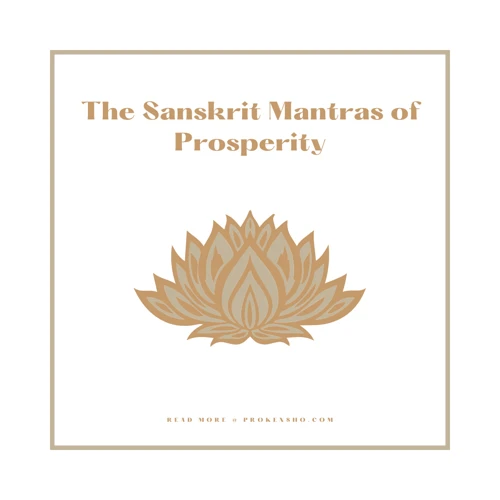As we navigate the complexities and challenges of modern life, many of us yearn for moments of peace and connection to something greater than ourselves. Mantras, ancient sacred sounds and phrases, offer a powerful means of achieving this connection. Whether you are new to using mantras or looking to deepen your practice, there are endless varieties to choose from, each with its own unique benefits and energy. In this article, we will explore the history, tradition, and spiritual importance of mantras, as well as the different types available to us. We’ll offer guidance on how to choose the right mantra for your needs, and explore the incredible benefits that regular mantra practice can bring to your physical, mental, and spiritual well-being.
What are Mantras?

Have you ever heard the word “mantra” and wondered what it means? Mantras are an essential part of various spiritual practices, but what exactly are they? Essentially, a mantra is a phrase or sound that is repeated during meditation or prayer. It’s a spiritual tool that can bring numerous benefits to your mind, body, and soul. In this section, we’ll explore the history, tradition, and importance of mantras. Let’s delve deeper into the world of sacred sounds and discover the power of mantras together.
History and Tradition of Mantras
Mantras have a rich history and tradition in various spiritual practices, from Hinduism to Buddhism to Jainism, and more. The use of mantras dates back thousands of years, and their meaning and significance have evolved over time.
Here is a table that highlights some key moments in the history and tradition of mantras:
| Time Period | Significant Developments |
|---|---|
| Ancient India (3000-1500 BCE) | The Vedas, a collection of ancient Sanskrit texts, were composed. Mantras were used in Vedic rituals and were believed to have inherent spiritual power. |
| Buddhism (6th century BCE) | The Buddha taught the use of mantras as a form of meditation and mindfulness. Mantras were used as a means to focus the mind and cultivate inner peace. |
| Tantra (5th-9th century CE) | Tantric practices emerged in Hinduism and Buddhism, incorporating mantras as a central part of their rituals. Mantras were used to invoke deities and harness their power. |
Throughout the centuries, mantras have been passed down through tradition and adapted to various spiritual practices. Today, people use mantras for a variety of purposes, from achieving inner peace to manifesting their desires.
The Spiritual Importance of Mantras
Mantras have a significant spiritual importance that goes beyond just their physical sound and repetition. Here are some reasons why mantras are so highly regarded in spiritual practices:
- Connection to the Divine: Mantras are believed to connect us to the divine forces of the universe. By repeating a particular sound or phrase, we can tap into the energy of the universe and align ourselves with our spiritual path.
- Purification: Mantras can also have a purifying effect on our mind and body. By focusing on a particular sound or phrase, we can detach ourselves from negative thoughts and emotions, and instead cultivate a sense of inner peace and calmness.
- Transcendence: Mantras are also used to help us transcend to a higher state of consciousness. By repeating a mantra, we can move beyond our everyday thoughts and experiences, and connect with a deeper, more spiritual part of ourselves.
- Healing: Chanting mantras is thought to have a healing effect on both the mind and body. It can reduce stress and anxiety, promote relaxation, and even boost our immune system.
- Manifestation: Finally, mantras are used to help us manifest our desires and intentions. By focusing our energy on a particular intention and repeating a mantra that supports it, we can bring about positive changes in our lives.
It is the combination of sound, intention, and spiritual connection that makes mantras so powerful and important in spiritual practices. The vibrations created by chanting a mantra can have a profound impact on our physical, mental, and spiritual well-being, making them an essential tool for those seeking greater spiritual growth and connection.
The Different Types of Mantras

As you delve deeper into the world of mantras, you’ll discover that there are many different types of mantras that originate from various spiritual practices and traditions. Each type of mantra serves a unique purpose, and some may resonate with you more than others. The following sections will explore some of the most common types of mantras, including bija mantras, shlokas and slokas, maha mantras, and tantric mantras. Understanding the differences between each type can help you determine which one is the right fit for you.
Bija Mantras
One of the most popular types of mantras, bija mantras are single-syllable sounds that are believed to have a powerful effect on the body and the mind. They are typically associated with Hinduism and are commonly used in meditation and spiritual practices.
Here is a table that showcases some of the most common bija mantras:
| Bija Mantra | Meaning |
|---|---|
| Om | The universal sound |
| Ham | The mantra of the throat chakra, associated with communication and expression |
| Ksham | The mantra of forgiveness and compassion |
| Shrim | The mantra of abundance and prosperity |
| Hrim | The mantra of the heart chakra, associated with love and compassion |
Bija mantras are said to have a profound impact on the body’s chakras, or energy centers, and are often used in chakra meditation to balance and align these centers. By repeating these mantras, practitioners believe that they can tap into the power of the universe and access deeper levels of consciousness.
If you’re new to chanting bija mantras, it can be helpful to start with a simple one like “Om” and gradually work your way up to more complex mantras. As with any type of mantra, it’s important to approach bija mantras with an open mind and a willingness to explore the power of sound and vibration in your spiritual practice.
Shlokas and Slokas
Shlokas and slokas are ancient Sanskrit verses from the Hindu tradition that are used as mantras. These verses are typically chanted or sung, often with the accompaniment of music or instruments.
Shlokas, which are also known as hymns, are typically longer than slokas and often have more complex meanings. They are often used in religious ceremonies and prayers, and are believed to have a powerful spiritual effect. Some of the most well-known shlokas include the Gayatri Mantra, which is a prayer to the Hindu deity Savitr, and the Mahamrityunjaya Mantra, which is a prayer for protection and healing.
Slokas, on the other hand, are typically shorter and simpler than shlokas. They are often used in daily rituals, such as morning or evening prayers, and are believed to have a purifying effect on the mind and body. Slokas can also be used for specific purposes, such as attracting wealth or success, or for healing purposes.
Both shlokas and slokas are believed to have a powerful effect on the mind and body, and are often used in meditation practices. The repetition of these verses is said to help quiet the mind, promote inner peace, and connect us to our spiritual nature.
When choosing a shloka or sloka to use as a mantra, it is important to choose one that resonates with your personal beliefs and intentions. It can also be helpful to choose a verse that has been traditionally used for a specific purpose, such as healing or prosperity.
Shlokas and slokas are powerful tools for spiritual growth and self-transformation. Whether used for personal meditation or as part of a larger religious practice, these verses can help us connect with our inner selves and the divine.
Maha Mantras
Maha Mantras are powerful and transformative mantras that are often seen as gateways to the divine. These mantras are typically longer than Bija Mantras and are often chanted in repetition, sometimes with the use of a mala or prayer beads. Here are some examples of Maha Mantras:
- Gayatri Mantra: This is a revered mantra from the Rigveda, a Hindu scripture. It is a prayer to the sun god, Savitr, and is believed to bring enlightenment and spiritual awakening. This powerful mantra is chanted in sets of 108 repetitions, especially at dawn and dusk.
- Om Namah Shivaya: This is a mantra for Lord Shiva, the Hindu god of destruction and transformation. It is believed to awaken the inner self, promote healing, and bring peace and happiness. It is commonly chanted in sets of 108 repetitions on a Rudraksha mala.
- Om Mani Padme Hum: This is a Buddhist mantra that means “Jewel in the Lotus.” It is a prayer for enlightenment and the realization of the ultimate truth. Chanting this mantra is believed to help remove negative emotions and bring compassion and wisdom.
Maha Mantras are often considered to be more complex and powerful than other types of mantras, and they are said to have a profound impact on the practitioner’s spiritual journey. It is important to approach these mantras with respect and reverence, and to chant them with sincere devotion and intention.
Tantric Mantras
Tantric mantras are a unique category of mantras that are used in tantric practices. These mantras are different from other types of mantras as they are focused on invoking the divine feminine energy, also known as Shakti. Tantric mantras are often used in the context of sexual practices as well, but it should be noted that their purpose extends far beyond this limited scope.
The Power of Shakti:
The use of tantric mantras is based on the idea that everything in the universe is made up of two fundamental forces, masculine and feminine. The feminine force, Shakti, is the energy that creates and sustains all life. Tantric mantras help to connect the practitioner with this divine energy and harness its power.
Chanting for Transformation:
Tantric mantras are often used in combination with other tantric practices such as visualization and meditation. The goal of these practices is to transform the practitioner, both mentally and spiritually. The use of tantric mantras can help to remove limiting beliefs and patterns of behavior, allowing the practitioner to access their full potential.
Not for Everyone:
It should be noted that tantric mantras are not for everyone. They require a deep level of commitment and understanding, and should only be practiced under the guidance of an experienced teacher. Additionally, these mantras often involve the use of sexual energy, which may not be appropriate or comfortable for all practitioners.
Explore with Caution:
Due to the sensitive nature of tantric mantras, it is important to approach them with caution and respect. It is recommended that practitioners do their research and fully understand the implications and potential risks before beginning this type of practice. It is also advisable to have a trusted guide or teacher to provide guidance and support throughout the process.
Tantric mantras can be a powerful tool for transformation and connection with the divine feminine energy. However, they should be used with care and only by those who are fully committed to the practice.
Choosing the Right Mantra for You

When it comes to choosing the right mantra for you, it can be a perplexing task. With so many different types of mantras available, it can be challenging to determine which one is right for your unique needs and intentions. However, by considering various factors and exploring different options, you can find a mantra that resonates with you on a deep level and helps you achieve your goals. Here are some tips and strategies for selecting the perfect mantra for your personal practice.
Consider Your Intentions
When choosing a mantra, the first step is to clearly understand your intentions. Take some time to reflect on what it is that you hope to accomplish through the use of a mantra. Are you looking for physical healing, emotional balance, or spiritual enlightenment? Consider the specific areas in your life where you feel you need support and focus on those. To help you with this process, you may want to create a list or mind map that outlines your goals and desired outcomes.
Some questions to consider:
- What area(s) of your life would you like to improve?
- What emotions or behaviors would you like to overcome?
- What character traits or values would you like to cultivate?
Once you have a clear understanding of your intentions, you can choose a mantra that will best support you in achieving your goals. For example, if you are looking for emotional balance, you might choose a mantra that focuses on peace, harmony, or love. If you are seeking spiritual enlightenment, you may choose a mantra that connects you to a specific deity or higher power. Whatever your intentions, there is a mantra out there that will resonate with you and help you achieve your desired outcomes.
Feel the Vibration
When choosing a mantra, it’s important to pay attention to the vibrations that it produces. This is because mantras are not merely words, but rather sounds with a specific frequency and energy. To truly benefit from the power of a mantra, you must not only chant or recite it, but you must also feel its vibrations within your body and mind.
Here are some tips on how to feel the vibration of a mantra:
- Repeat the mantra out loud or silently, focusing on the sound as it resonates through your body.
- Pay attention to where you feel the vibration most strongly. Is it in your throat, chest, or head?
- Breathe deeply and allow the sound to fill your lungs and expand your diaphragm.
- Visualize the sound waves moving through your body and creating positive energy.
- Stay present in the moment and try not to let your mind wander. This will help you fully experience the vibration of the mantra.
Remember, the energy and vibration of a certain mantra can vary from person to person. What works for one individual may not work for another. As you experiment with different mantras, pay attention to how each one makes you feel. Trust your intuition and stay open to discovering the power within.
Consult a Teacher or Guide
When it comes to choosing the right mantra, it’s important to note that it can be a deeply personal and individual experience. While some people may find that a particular mantra resonates with them immediately, others may struggle to find the right one for them. In such cases, it can be helpful to consult a teacher or guide who has experience with mantras and can offer guidance and support.
Here are some tips for finding a teacher or guide who can help:
- Look for reputable teachers or guides who have experience with mantras and can offer personalized guidance based on your individual needs and intentions.
- Consider attending a workshop or retreat focused on mantras, where you can receive instruction from an experienced facilitator and connect with other like-minded individuals.
- Find a teacher or guide who resonates with you personally and with whom you feel comfortable discussing your spiritual journey and aspirations.
- Remember that a good teacher or guide should never pressure you to choose a particular mantra or follow a certain path, but should instead offer support and guidance as you explore and discover what works best for you.
Consulting a teacher or guide can be an invaluable tool for finding the right mantra and deepening your practice. With the right support and guidance, you can unlock the full potential of mantras and experience their transformative power in your life.
The Benefits of Using Mantras
As we delve deeper into the world of mantras, it becomes increasingly evident that they offer numerous benefits to those who incorporate them into their daily lives. From physical healing to spiritual growth, mantras have the power to transform our lives on multiple levels. Here, we will explore the different benefits of using mantras and how they can enhance our overall well-being. So, let’s dive into the transformative power of these sacred sounds.
Physical Benefits
There are numerous physical benefits associated with the practice of mantras. Here are some of the most notable ones:
- Reduced stress levels: Mantras can have a calming effect on the body, which can reduce stress levels. The repetition of a mantra can help slow down the heart rate, lower blood pressure and bring a sense of relaxation to the body.
- Improved sleep: Practicing mantras regularly can lead to improved sleep. This is because mantras can help calm the mind, which can make it easier to fall asleep and stay asleep throughout the night.
- Increased energy: Certain mantras can help boost energy levels by stimulating the nervous and endocrine systems. This can lead to increased vitality and a greater sense of wellbeing.
- Better breathing: Breathing is an important component of many mantras. By focusing on the breath, practitioners can improve their lung capacity and increase oxygen flow to the body.
- Strengthened immune system: Some mantras are believed to stimulate the production of endorphins, which can help boost the immune system. A stronger immune system can help protect the body against illnesses and infections.
These are just a few of the physical benefits of practicing mantras. It’s important to note, however, that the benefits can vary depending on the type of mantra and how it is practiced. To maximize the physical benefits of mantras, it is essential to engage in regular and consistent practice under the guidance of a qualified teacher.
Mental and Emotional Benefits
Mantras not only have physical benefits, but they can also have a profound impact on our mental and emotional well-being. The repetitive nature of chanting can help calm the mind and reduce anxiety, while also promoting a sense of inner peace and balance. Let’s take a closer look at some of the mental and emotional benefits of using mantras.
| Benefit | Description |
| Reduces Stress and Anxiety | Chanting mantras can help reduce the production of stress hormones like cortisol, which can alleviate feelings of anxiousness and promote a sense of calmness. |
| Increases Focus and Concentration | The repetitive nature of chanting can help improve mental focus and concentration, which can lead to increased productivity and reduced distractibility. |
| Improves Memory and Cognitive Functioning | Research has shown that regular mantra practice may help improve cognitive function, memory retention, and learning abilities. |
| Promotes Emotional Balance | Mantras can promote emotional balance by calming the mind, promoting self-awareness, and encouraging individuals to focus on positive thoughts and emotions. |
| Boosts Self-Confidence and Self-Esteem | Chanting mantras can help boost self-confidence and self-esteem by promoting positive self-talk and self-affirmation. |
| Fosters Mindfulness and Inner Peace | Through regular practice, mantras can help cultivate mindfulness and inner peace, allowing individuals to feel more grounded and present in their daily lives. |
The mental and emotional benefits of mantras can be significant, and incorporating regular chanting practice into your daily routine may help improve your overall well-being.
Spiritual Benefits
Using mantras can provide a range of spiritual benefits for individuals on their spiritual journey. Here are some of the spiritual benefits of using mantras:
- Connection with the Divine: Mantras can help establish a connection with the divine. The repetition of a sacred sound or phrase can help create a meditative state that allows individuals to feel a deeper connection to the universe and to a higher power.
- Inner Peace: Mantras can help individuals achieve a greater sense of inner peace. The meditative state created through the repetition of a mantra can help quiet the mind and reduce feelings of stress and anxiety.
- Enhanced Spiritual Awareness: When used regularly, mantras can help individuals develop a heightened sense of spiritual awareness that can improve their ability to connect with their spiritual side. By focusing on a particular sound or phrase, individuals can become more in tune with their inner selves and their spiritual journey.
- Deepened Meditation: Using mantras as a focal point during meditation can help individuals enter a deeper state of meditation. The repetition of a sound or phrase can help quiet the mind and allow individuals to enter a state of deeper relaxation and introspection.
- Transcendence: The use of mantras can help individuals reach a state of transcendence, where they feel a sense of oneness with the universe and a wider sense of consciousness. This can be a deeply transformative and spiritual experience that can help individuals feel more connected to their higher self and to the divine.
It’s important to note that the spiritual benefits of using mantras may vary from person to person depending on their individual spiritual beliefs and practices. Some individuals may find that certain mantras resonate more with them than others, while others may find that the mere act of repetition is enough to help enhance their spiritual practice. Regardless of how individuals integrate mantras into their spiritual practice, the spiritual benefits are undeniable and can help individuals to feel more connected to their inner selves and to the divine.
Conclusion
In conclusion, mantras have a long and rich history in various spiritual traditions, and there are many different types of mantras to choose from. Whether you are looking for physical, mental, emotional or spiritual benefits, there is a mantra that can help you achieve your goals.
It is important to choose the right mantra for you, based on your intentions and personal preferences. You may want to try different types of mantras to find the one that resonates with you the most.
Using mantras regularly can have a positive impact on your overall wellbeing, including reducing stress, increasing mindfulness and opening up new spiritual insights. It is also a powerful tool for connecting with your inner self and manifesting your desires.
If you are new to using mantras, it is a good idea to consult with a teacher or guide who can provide you with guidance and support. With practice and dedication, you can experience the transformative power of mantras in your own life. So, start exploring the different types of mantras and find the one that is right for you.
Frequently Asked Questions
What is the origin of mantras?
Mantras originated in ancient Vedic tradition of India around 1500 BCE.
Can mantras be used for healing?
Yes, mantras can be used for physical, emotional, and spiritual healing purposes.
Can mantras be used for manifesting desires?
Yes, mantras can be used to manifest desires but they should also be accompanied by action and positive mindset.
Are there any side effects of using mantras?
No, there are no side effects of using mantras, but they should be used with proper guidance and intention.
Is it necessary to chant mantras in Sanskrit only?
No, mantras can be chanted in any language but Sanskrit is considered to be the most powerful and effective.
Can mantras be practiced by anyone?
Yes, anyone can practice mantras regardless of their religion, age, or gender.
How long does it take to experience the benefits of mantras?
The benefits of mantras can be experienced immediately or may take some time depending on the intention and regularity of practice.
Can mantras be practiced without a guru or teacher?
Yes, mantras can be practiced without a guru or teacher but it is advisable to seek guidance for proper pronunciation and understanding.
What is the significance of chanting mantras during meditation?
Chanting mantras during meditation helps to focus the mind and connect with the inner self, resulting in a deeper and more meaningful meditation experience.
What are some popular mantras and their meanings?
Om, Gayatri Mantra, Om Namah Shivaya, and Om Shanti are some of the popular mantras with powerful meanings related to peace, love, and enlightenment.








